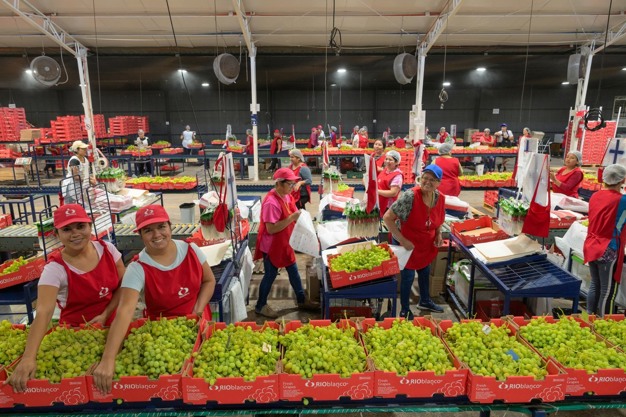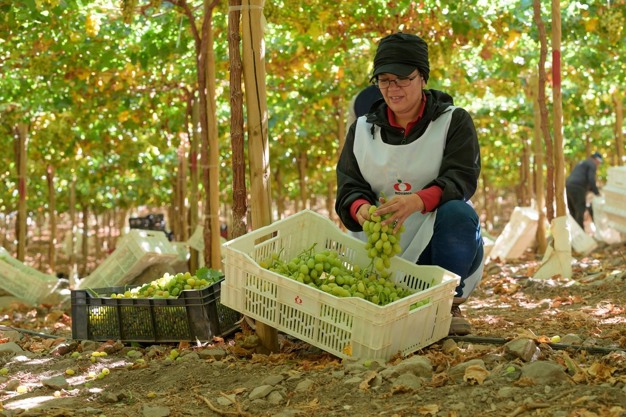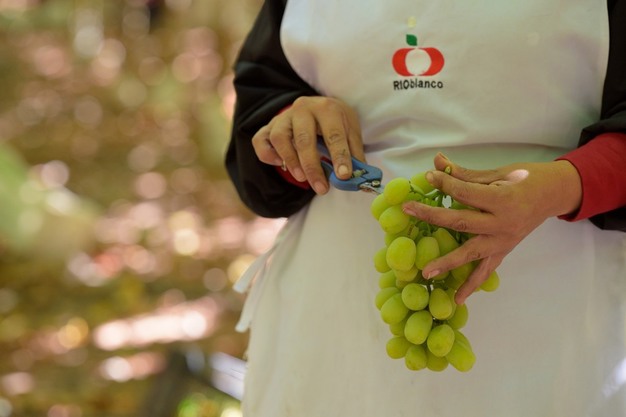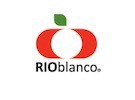After news that the International Longshoremen's Association (ILA) and the United States Maritime Alliance (USMX) employer group have reached a tentative deal and thus avoiding a potential U.S. port strike, shippers of Chilean grapes–and many other commodities–are breathing easy again. "There was quite a bit of nervousness about a strike," said Nicolas Damm of Rio Blanco. "Some shipping companies were canceling bookings and vessels to the East Coast which also caused nervousness. Some ports in Chile were also being closed due to big waves affecting the ports."

That means that shipping of Chilean grapes, which this season is seeing a slightly bigger crop, can continue relatively smoothly. Rio Blanco's supply is up by about five percent this season due in part to some younger vineyards coming into production. The Chilean estimation was similar to last year's numbers, though with some changes in varieties.
Timing of season
Overall harvesting of Chilean grapes this season began in the Copiapo region in the first week of December, as per usual, though Damm notes that some industry suppliers were delayed and some were early as well. All of this follows good growing conditions in Chile. "The winter was good in terms of cold weather without frost issues. There was more rain during winter so more humidity in our soil," he says. This was followed by a mild spring.

These growing conditions are reflected in the quality of the grapes shipping. "Atacama is just beginning to harvest and the earliest varieties we're seeing have great sizes and a good amount of bunches. The condition of the fruit is great," says Damm. "When we go to the farms, we hear confidence from the production teams. It gives us a sigh of relief because we don't see them worried about the condition of the fruit. They're more focused on getting the fruit harvested on time which is a good position to be in."
In terms of varieties, Rio Blanco is shipping Sweet Celebration grapes from Copiapo and also from Vicuña (4th region). It's also begun with its earlier Cotton Candy grapes from the fourth region and also some green Sweetie grapes. It will also start slowly with its Ivory production and early Sugraones from Aconcagua.
Steady strong grape movement
As for grape demand, it's been strong with good movement even though Peru is also loading quite a bit of grapes. "The U.S. market is moving the fruit quickly and at good prices. The market is looking really good," says Damm, adding that pricing is similar to last year at this time or possibly even slightly higher on spot market pricing. "The next few weeks we will see how the big retailers plan for the rest of the season's pricing," he says. "We have good expectations. California moved quite a bit of fruit at really good price levels and Peru is also arriving in the U.S. with good price levels so we hope the prices will continue to be similar to last season. The quality and condition of the fruit can defend these prices."

Early estimates are that Rio Blanco´s harvesting in Chile will be 80 percent finished by the first week in April.
What is bringing up some questions for Chilean grape shippers is the state of the Chinese market. "China, which usually begins production in early May, is producing more grapes–earlier but also going later with their production," says Damm. "We haven't seen good demand or good pricing in the Chinese market this last season and we also saw quite a bit of a drop in volume from Peru and Chile. With the good demand in the U.S. and Europe and pretty good demand in Latin America, there may be some diverting of fruit from China to not risk the pricing. That's something we're looking into."
 For more information:
For more information:
Nicolas Damm
Rio Blanco
Tel: +56 (2) 2307 4100
[email protected]
www.rioblanco.net










